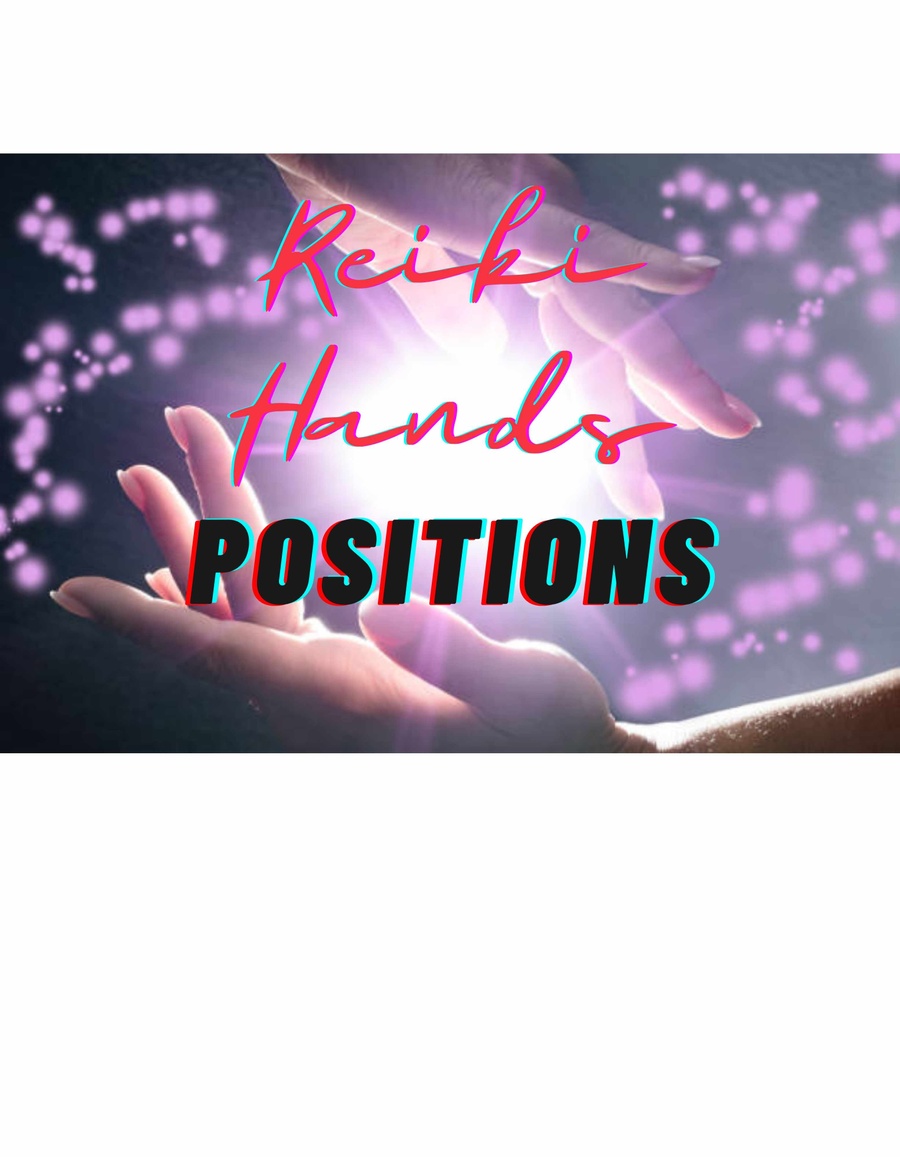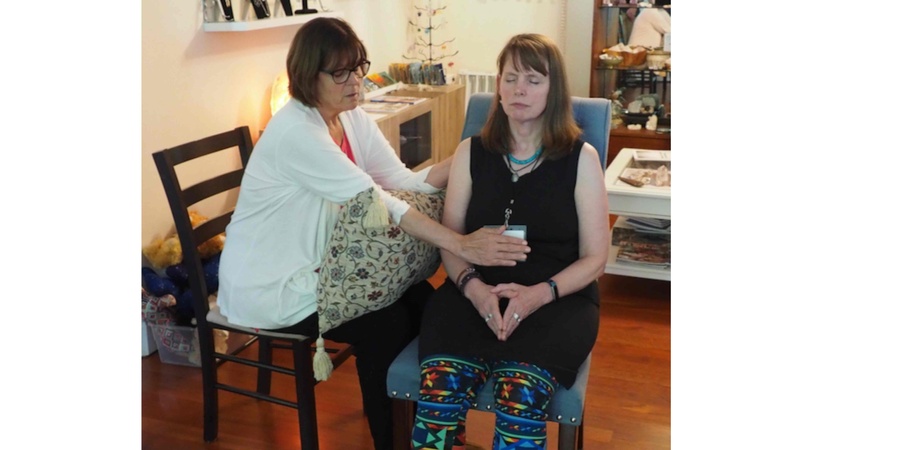Introduction To Reiki Hand Positions For The Treatment Of Others
Table of Contents

During treatment, keep your fingers closed and your thumb near your hand. Comprehensive Reiki therapy usually involves 12 reiki hand positions on the head and body in the West.
Each position is held for around five minutes, with the option to leave the hands-on longer if you feel a lot of Reiki flowing (hot, cold, tingling, buzzing, etc.) and the area still needs more energy.
Certain Reiki masters teach a somewhat different treatment structure, with up to six hand positions on the head and neck and ten hand positions front and back, including the legs and feet. The head and body postures are held for roughly five minutes, while the legs and feet are held for two or three minutes.
Despite knowing and using Dr. Usui's 68 hand positions, I usually always employ the 12 hand positions I was taught. They allow Reiki to flow into every chakra and around the entire physical and energetic body, so I merely add them to the flow and rhythm of the standard Western treatment.
It takes slightly over an hour for the customer to roll over and have their back treated. It takes an hour and a half for more hand postures. Both you and your client must be at ease. Keeping the hands motionless for long periods might be difficult without a Reiki couch or other proper equipment.
The client usually lies on their back with arms at their sides for the first five hand positions while the Practitioner stands or sits behind them. Hands should rest gently on the body, so avoid applying pressure.
Most individuals find gentle touching of the body reassuring, but some cannot take it. The Reiki will still flow into the client if you place your hands comfortably above the body in the auric field. This can also treat parts of the body where even light pressure might be unpleasant due to damage. To be as comfortable as possible, pay close attention to your stance or how you are seated.
When first learning Reiki, some practitioners are cautious to placing their hands on the client's body, fearing it may be intrusive, resulting in a hesitant, "fluttering" sensation that most clients dislike. These hand positions are not "intimate" and do not violate the client's privacy.
Move one hand at a time, if possible, to maintain touch. For hand positions 6–8, you must stand or sit to one side of the patient.
After treating the front of the body, gently awaken the client (who is generally completely calm) and urge them to change over to the show. Assist them in turning over, adjusting the cushions so that the headrests comfortably and the other pillow is placed under the ankles. Their arms don't have to be at their sides when sleeping on their front, so let them do whatever they like. Tell them they can change their mind if they need to. Sometimes people valiantly stay in the same position despite being in great pain because they believe they must.
The treatment can resume after the client is calm. For those who have a lot of stress on their shoulders, hand position 9 is ideal. Then go down one side of the body for hands 10-12.
Treatment Alternatives

For the second phase of the treatment, a person who cannot lie on their stomach, such as a pregnant lady, can lie on their side. The rest of the session is more comfortable if you sit by her side on the therapy couch.
If you ever need to treat someone who cannot lie down, you can quickly treat them while sitting on a chair. To maximize energy flow, ensure the client's legs are uncrossed, and both feet are on the floor (or other support). It's possible to stand or sit behind them for the head positions and then sit or kneel by their side for the hand positions.
The back-of-the-body hand placements are also simple if sitting on a dining chair. If they can only sit in an armchair or wheelchair and cannot lean forward, you can modify the treatment. Because Reiki is high-vibrational energy, it can readily pass through a chair's back.
Before You Start
After ensuring your client's comfort, it's time to prepare yourself. Spend a few minutes focusing on deep, even breathing and relaxing your body. Then, if you haven't previously, do either the Dry Brushing or Reiki Shower self-cleansing techniques described in Chapter 15, and then "tune in" to the Reiki by wanting it to flow.
"I am now initiating a full Reiki treatment on [name of person] and wish Reiki to flow into him/her for his/her highest and greatest good," you can say silently to evoke Reiki. Because your ideas are already being acted upon and the Reiki is already flowing, this isn't necessary, but it emphasizes your objectives.

Related
Chanting And Toning With Karuna Reiki
The Karuna Reiki experience taught me that toning or chanting during a Karuna Reiki session causes profound shifts in the healing energy's vibrational frequency. The Mahayana Buddhist tradition of the bodhisattva Avalokitesvhara, who creates the Sound that Illuminates the World, validates this notion.
The Ethics Of Distant Reiki Healing
The Second Degree procedures teach you how to transmit powerful healing to anybody, anywhere, at any time, including the past and future. Using the Distant (Connection) Symbol helps you to construct a bridge between you and the person (or animal) you wish to heal.
Guided Meditation To Help Heal The Shadow Self Can Change Your Life
The shadow self refers to the aspects of ourselves that have been repressed into the unconscious — the aspects of ourselves that we are insecure about, ashamed of, or frustrated with. The shadow self-concept is based on the idea that we metaphorically bury those aspects of our personalities that we fear will not be accepted, accepted, or loved by others; thus, we keep them in the shadows.
How To Build A Successful Reiki Practice - FAQs
After you've mastered the techniques necessary to perform Reiki on others in-person and remotely, it is entirely up to you to decide whether Reiki is something you wish to pursue as a more formal public practice.
Integrative And Functional Medicine —Personalized Care For The 21st Century
The goal of integrative and functional medicine is to get to the root cause of health problems and treat the whole person with a combination of approaches—optimizing health for those who have it and restoring health for those who have lost it. Integrative medicine and functional medicine are often used interchangeably, but the terms are actually referring to two different approaches to patient care.
The Karuna Reiki Attunements
A common belief is that compassionate action is captured in this non-traditional form of Reiki. When used in conjunction with Usui Reiki, it has a powerful effect on its own, but even more so.
Karuna Master Symbols and Their Uses
Other healing systems incorporate the Karuna Reiki Master symbols. For instance, The International Center for Reiki Training incorporates the Usui Dai Ko Myo, Tibetan Dai Ko Mio, and Tibetan Fire Serpent into our Usui/Tibetan Reiki Master Training.
Kuan Yin - The Goddess Of Mercy
Kuan Yin is an example of an enlightened being. Bodhisattva, or enlightened being, guards the earth. The Chinese deity Kuan Yin is revered as a symbol of compassion and love.
Possible Side Effects Of A Karuna Reiki Attunement
Becoming a Reiki practitioner with the ability to heal oneself and others is a beautiful path that allows you to make a difference in the world. While it is exciting to receive an attunement in order to increase your frequency and connection to the universal life force energy, these attunements come at a cost.
The Traditional Karuna Reiki Attunements
Karuna is typically only taught to Usui Reiki Master practitioners. There are four levels of Karuna instruction. There are four levels of mastery in this system: two for practitioners and two for masters.
Original Karuna Attunements - The Sai Baba Reiki Attunements
For those wishing to view the original Sai Baba attunement process in order to compare it to later attunements, these are included for informational purposes only. You will notice a resemblance between these and the attunements developed later.
